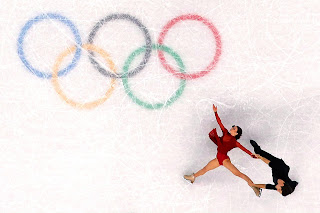
Since 1924, the Winter Olympics have been held in various cities around the world every four years. The Nordic Games in Sweden were the first international multi-sport winter event held in 1901. These games, which were held every few years, evolved into the Winter Olympics. Prior to being designated as a separate event known as the Winter Olympics, some competitions such as speed skating, ice hockey, Nordic skiing, and figure skating were held as part of a winter sports week. This winter sports week was held in conjunction with the Summer Olympics. The 1924 International Winter Sports Week was renamed and considered the first Winter Olympics in 1925.
Victor Gustaf Black was not only the founder of the Nordic Games, but he also played a significant role in the establishment of the Winter Olympics. His efforts helped to bring the idea of the Winter Olympics to the attention of the International Olympic Committee (IOC).
Although the modern Olympics began in 1896 with the Summer Olympics held in Athens, the Winter Olympics were not added until 1924. The first Winter Olympics were held in Chamonix, France, and featured 250 athletes from 16 countries competing in 16 events.
The Olympic motto ‘Citius, Altius, Fortius’ meaning ‘Faster, Higher, Stronger’ was proposed by Pierre de Coubertin, the father of the modern Olympics, who heard a priest say these words several years before he proposed them in 1894.
Lake Placid has hosted the Winter Olympics twice, first in 1932 and then again in 1980. In the history of the Winter Olympics, Norwegian athletes have won the most medals since the inception of the games.
Ice hockey, speed skating, figure skating, and curling are the four indoor Winter Olympic sports. The last time the Summer and Winter Olympics were held in the same year was 1992, and following that, they have been held two years apart.
One of the most remarkable moments in the history of the Olympics was the awarding of a bronze medal to Anders Haugen, a ski jumper, 50 years after the 1924 Winter Olympics due to a scoring error.
The 1960 Winter Olympics in Squaw Valley had the legendary Walt Disney in charge of the opening and closing ceremonies. The 1972 Winter Olympics were the first to take place outside of Europe or North America and were held in Sapporo, Japan.
The 2014 Sochi Winter Olympics marked the first time that women were allowed to compete in the ski-jump, which was previously a male-only competition. In addition, the Sochi Olympics were held in the warmest city ever to host the Winter Olympics.
Lake Placid has hosted the Winter Olympics twice, in 1932 and 1980. The 1980 games are notable for the “Miracle on Ice,” in which the US men’s ice hockey team, made up of amateur and collegiate players, defeated the heavily favored Soviet team in a stunning upset.
Since the Winter Olympics’ inception, Norwegian athletes have won the most medals. As of the 2018 Pyeongchang Winter Olympics, they have a total of 368 medals (132 gold, 125 silver, 111 bronze).
Ice hockey, speed skating, figure skating, and curling are the four indoor Winter Olympic sports. The other events take place outdoors, such as skiing, snowboarding, biathlon, and bobsled.
Previously, the Summer and Winter Olympics were held in the same year. The last time this happened was in 1992. Following that, they alternated being two years apart. This allows for more attention and resources to be devoted to each event.
At the age of 83, the oldest Olympic medalist received his medal. Anders Haugen’s name was Anders Haugen, and he was a ski jumper. He competed in 1924, but due to a scoring error, he didn’t receive his bronze medal until 1974, 50 years later than he should have. Haugen passed away two years later at the age of 86.
Walt Disney was in charge of the opening and closing ceremonies of the 1960 Winter Olympics in Squaw Valley. He produced a 13-minute film called “The Olympic Elk,” which was shown during the opening ceremony and featured real elk and a skier.
For the first time, women were allowed to compete in the ski-jump at the Sochi Olympics. Previously, it was a male-only competition. This was a major milestone for gender equality in the Winter Olympics.
The Winter Olympics in Lake Placid in 1980 were the first to require the use of artificial snow. This was due to a lack of natural snowfall leading up to the games, which prompted the organizers to create their own snow using water and air.
The 1968 Winter Olympics were the first to be broadcast in color on television. This was a major technological advancement that allowed viewers to better appreciate the vibrant colors of the winter sports.
The 1972 Winter Olympics were the first to take place outside of Europe or North America. They took place in Sapporo, Japan, and featured 1,006 athletes from 35 countries competing in 35 events.
Sochi is the warmest city ever to host the Winter Olympics. The average temperature in February, when the games were held, is around 10 degrees Celsius (50 degrees Fahrenheit), which presented a challenge for maintaining snow and ice conditions. The organizers used snow-making machines and stored snow from the previous winter to ensure sufficient snow coverage.
The Winter Olympics have a rich history and continue to captivate audiences with thrilling athletic performances and moments of triumph and inspiration.









